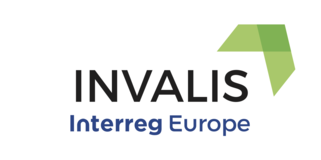Invasive species - a threat to native species and ecosystems
On June 9, within the Interreg Europe Programme project “Protecting European Biodiversity from Invasive Alien Species” Zemgale Planning Region hosted an online seminar “The range of invasive alien species in Latvia is gating wider: what to do?”. During the seminar, experts talked about various topics related to invasive alien species (IAS), as well as invited participants to a discussion. Before the event the registered participants filled out a questionnaire in order to find out what issues related to the topic are important for them so that these questions can be discussed in the seminar.
During the seminar, the participants learned about the mechanisms of controlling the spread of IAS, their management in ways that reduce socio-economic and environmental risks, public administration policies to combat these species, as well as the importance of public involvement.
Senior expert at the Wildlife Protection Division of the Nature Conservation Agency Santa Rutkovska, pointed out that the cheapest and most effective method is to prevent invasive species from entering the territory. There are invasive species that are not found in Europe yet, but have proven their aggressive nature in its vicinity. When it enters the area, an immediate attempt must be made to fight it, but unfortunately there are cases where the species have spread so widely that it no longer possible to control it.
For example, one Canadian goldenrod plant has more than 10,000 seeds and up to 309 shoots per square meter, as a result they displace local species and change the soils structure. The Himalayan Balsam also has very dense stands, with its large leaves they shade and therefore squeeze out local species, they prevent forest regeneration and provoke soil erosion. Similarly, the dense stands of low juneberry in forests also prevent the recovery of dominant trees species and local ecosystems, as well as causing changes in the landscape. Outside the plant world the forever hungry Spanish slug poses a significant threat to the owners of small gardens and even farms. These and other invasive species, as well as examples from their control measures, were presented to the participants by Santa Rutkovska and by Brigita Laime, researcher and associated professor at the Faculty of Biology of the University of Latvia.
Invasive alien species are a threat to human health, as well as damage to the economy, stressed Māra Melnbārde - senior expert at the Species and Habitats Protection Division of the Ministry of Environmental Protection and Regional Development. Although only Sosnowsky’s hogweed is in the list of Latvian invasive plants list, the list of Invasive Alien Species of Union concern (both plants and animals) contains 66 species of which 18 are found in Latvia - 10 in the wild, but eight in trade of private collections, and many still have the potential to enter the territory. According to Māra Melnbārde, a number of prohibition measures will soon be adopted to limit the spread of invasive alien species - it will be prohibited to import these species in the EU, keep them as pets or house plants, breed or grow, transport, place on the market, exchange, allow reproduction or spread in the wild, while hunting for these species and circulation of hunting products will be allowed.
Ilze Priedniece, the project manager of the Latvian Fund for Nature, presented information about the online nature observation website dabasdati.lv and the significance of the information submitted by its users. An active and knowledgeable society is one of the keys to identifying invasive species pathways and discovering new stands. On this website, it is possible not only to share observations of species, but also to participate in various projects, help researchers, discuss and communicate with other users of the portal, like-minded people and experts.
Information on various invasive alien species is available on the Nature Conservation Agency’s website (https://www.daba.gov.lv/public/lat/dati1/invazivas_sugas/, while more detailed information about Sosnowsky’s hogweed is available on the website of the State Plant Protection Service (http://www.vaad.gov.lv/sakums/informacija-sabiedribai/par-latviju-bez-latvaniem.aspx).

